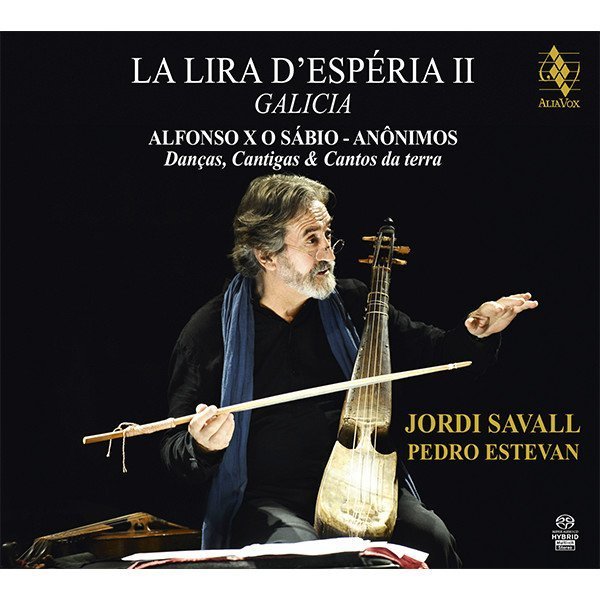LA LIRA D’ESPÉRIA II
GALICIA
Jordi Savall
17,99€
Referència: AVSA9907
- Jordi Savall
- Pedro Estevan
- David Mayoral
In 1994, after several years of research, experimentation and concerts, we recorded our first CD devoted to La Lira d’Espéria, performed on my three early instruments – the Rebec, the Tenor Fiddle and the Rabab (Rabel morisco) – with the indispensable percussion of Pedro Estevan. The idea was to announce the music and instruments featured in the recording using the evocative ancient names of Lyra and Hesperia. It was an obvious choice, as the whole recording was devoted to the medieval repertory for bowed instruments and consisted of music from the various Christian, Jewish and Arabo-Andalusian cultures that existed in ancient Iberia and Italica.
In 1994, after several years of research, experimentation and concerts, we recorded our first CD devoted to La Lira d’Espéria, performed on my three early instruments – the Rebec, the Tenor Fiddle and the Rabab (Rabel morisco) – with the indispensable percussion of Pedro Estevan. The idea was to announce the music and instruments featured in the recording using the evocative ancient names of Lyra and Hesperia. It was an obvious choice, as the whole recording was devoted to the medieval repertory for bowed instruments and consisted of music from the various Christian, Jewish and Arabo-Andalusian cultures that existed in ancient Iberia and Italica.
Hesperia is the name the Ancient Greeks gave to the two westernmost peninsulas in the Mediterranean: the Italic and the Iberian peninsulas. According to Diodorus, this is also the probable location of the Hesperides (or Atlantis), with their famous gardens where golden apples (oranges?) with magical properties grew.
+ information in the CD booklet
JORDI SAVALL
Normandy, 25th August 2014
Translated by Jacqueline Minett







Share